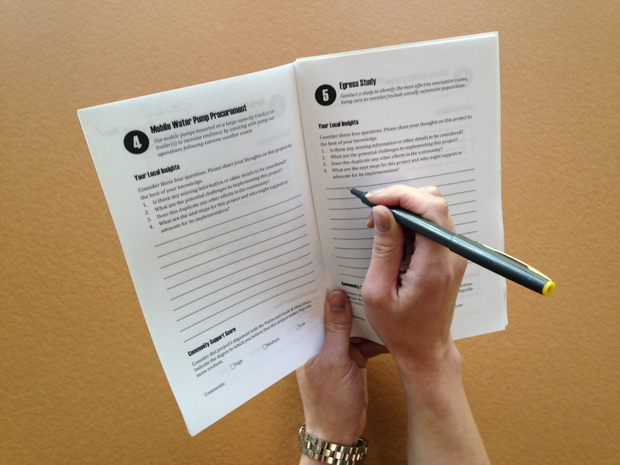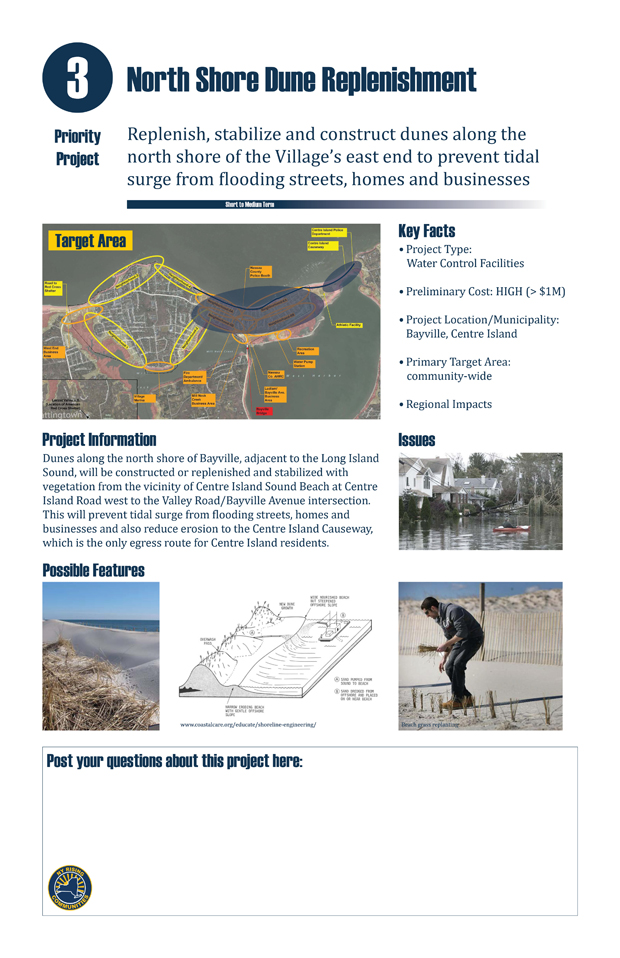Think Big: Public Engagement
Digging into scenario planning and exploring questions about how to field community input
 Sasaki
Sasaki

Building resilience to climate change means working in unprecedented ways. We must move beyond emergency response and recovery, and focus on regional, long-term solutions that will not only rebuild communities that have already experienced devastation, but also protect vulnerable areas in the future.
It’s a tall order politically, financially, and socially.
One of the many challenges is facilitating pubic engagement around these issues—especially regions that have already been affected. People’s homes were lost; their lives were changed. In a deeply emotional and sometimes contentious context, how do we come to consensus around the best ways to both rebuild and create long-term resilience? Our take is that we need to reframe the conversation. Traditional “open mic”-style public meetings offer opportunities for sharing—which can be an important phase early on in a community’s collective healing—but this format is also susceptible to individual agendas and grand-standing. To get at the right solutions, we need new, more productive methods.
The New York Rising Community Reconstruction (NYRCR) Program provided 102 localities across the state with the framework and funding to build back better after Superstorm Sandy and Hurricane Irene. In the Village of Bayville, Sasaki worked with a committee of local residents, state planners, AKRF, and CDM-Smith to develop an actionable plan that would utilize the village’s $3 million funding allocation from the US Department of Housing and Urban Development’s (HUD) Community Development Block Grant–Disaster Recovery (CDBG-DR) program.
In January, the committee developed a list of 21 proposed projects that they wanted to include in their reconstruction plan, about half of which were eligible for CDBG-DR funding. The projects needed community input, and we developed a new way to facilitate a productive conversation and extract meaningful feedback.
First, we created posters that outlined key facts, issues, and precedents for each project:

At the public engagement event, each attendee received a “project passport,” which allowed them to provide local insights, give each project a community support score, and reflect on the potential impacts of each project:
Attendees then circulated around the posters, with committee members available throughout the room to answer questions.
This approach allowed attendees to choose which projects they wanted to engage with, and resulted in rich discussions around the most controversial projects. The passport metaphor also enabled the committee to get fresh perspectives on projects with a sense of exploration—while the completed passports themselves provided the committee with detailed written feedback. State planners replicated the model across other NYRCR communities on Long Island, and the committee made final project selection for the plan with the community feedback.
The project passport is one way to innovate public engagement, and there are many others. (Learn more on the regional approach we took in Northeast Ohio and our web-based engagement technology CrowdGauge.) By framing the conversation differently, we can move toward a more resilient future united.